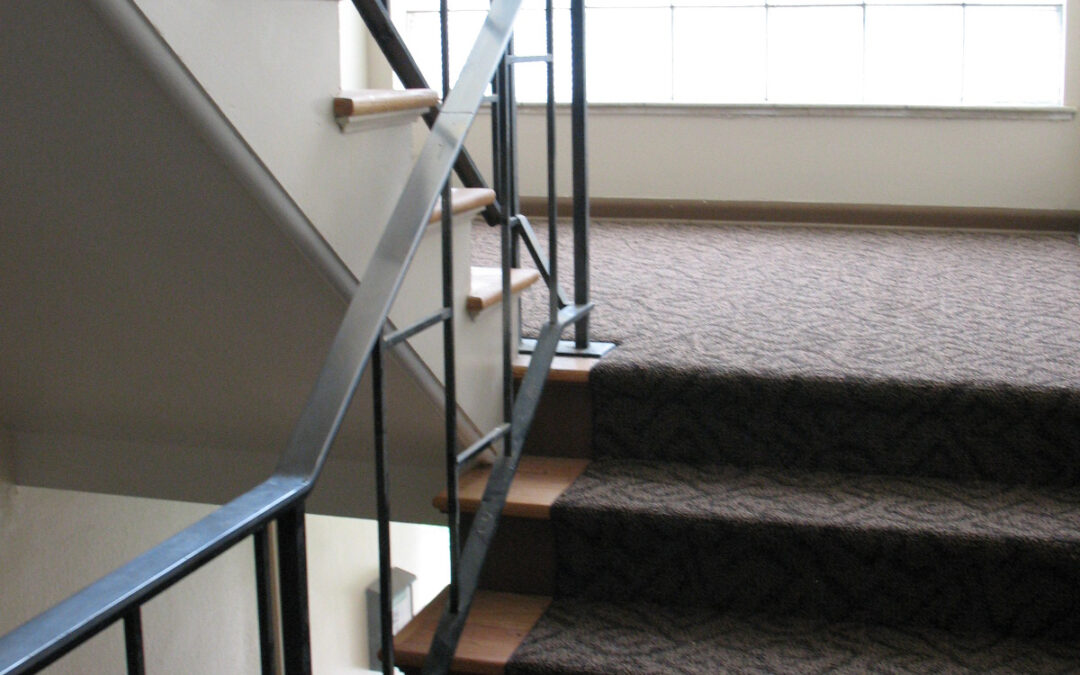As the owner of a multifamily property, you have plenty of things to keep up with–including maintaining the common areas. Do you know what’s really necessary to take care of the common areas on your property? Who’s responsible for it? Equally importantly, can you find a way to profit from that basic maintenance?
Knowing how to effectively manage maintenance on your property, including those common areas, can help set you up to manage your property more successfully.
Why maintain common areas?
Common areas of your multifamily dwelling are the areas that are used by everyone, rather than belonging to a specific unit. These might include the pool or clubhouse but can also include hallways and stairwells exterior to the units.
In short, a common area is any area that is used by more than one family of tenants. The maintenance of common areas is critical for several reasons.
- It’s the law! In Colorado (and most other states), you must provide a habitable space for your residents, including safe, secure premises that do not compromise the safety of the residents.
- Keeps everyone safe: Regular maintenance helps provide for the safety and security of residents, staff, and visitors.
- You’ll avoid fines and unnecessary exposure to liability: Because of your legal liability as a landlord, you can receive fines from the city and the state if you don’t keep up with maintenance on your property. Not only that, you may face expensive legal bills if, for example, a resident has a trip and fall accident on poorly-lit stairs.
- Extends the life expectancy of your carpet and flooring: It just lasts longer when you take the time to maintain it! Dirt in your carpet wears away at the fibers, so each step on dirty carpeting can decrease its life expectancy.
- Delivers better leasing and marketing results and increase your overall profit: Let’s face it. The way the outside of an apartment complex looks matters. Potential tenants start forming an opinion of the property long before they actually look in an open unit. If you want great curb appeal and better renters, take the time to fix up those common areas!
What are common areas in your building?
In your multifamily complex, you may have several different common areas. As you’re planning maintenance, consider:
- Exterior walkways
- Community gardens
- The parking lot and carports
- Laundry facilities
- Mail areas
- Package and storage rooms
- Community areas, including clubhouses
- Courtyards
- Corridors, halls, and stairwells
- Entryways
- Decks and railings
- Pools
- Lighting
- Doors
- Elevators
- The barbecue, fire pit, or grill in a social gathering area
- Trash disposal and recycling areas
Typical common area maintenance expenses
When you’re focused on providing a high quality of maintenance for your tenants, you may have a number of expenses that need to factor into your operating budget. Make sure you’re including these common area maintenance expenses:
Repair and maintenance: You’ll need to keep everything clean and tidy and take care of any repairs necessary throughout the year. Previous maintenance records will give you a better idea of what it will cost to maintain those areas in the future. If the building is new to you, you should also consider how well-maintained previous owners kept those areas. If you plan to offer more maintenance for your residents, your costs may increase.
Snow removal: Contact local snow removal companies and ask about the expense of maintaining your parking lots, sidewalks, and other outdoor common areas.
Utilities in the common areas: Tenants need clear, safe lighting in common areas. As the landlord, it’s your duty to provide that lighting. You’ll also need to consider common area utility expenses such as:
- Water for the pool, fountains, community bathrooms, laundry room equipment, sprinkler systems and landscaping
- Electric and gas for heating and air conditioning
Trash and recycling removal: In most multifamily dwellings, the landlord takes on the cost of removing waste from the premises. Look for a provider that will take care of both trash and recycling, ideally with minimal restrictions. For example, will your provider take away large furniture and other items that might not fit in the dumpster? What about brush that builds up outside?
HVAC maintenance: You must heat and cool your common areas; or, you might use a large unit to run the entire building. Regular HVAC maintenance can help you avoid expensive repair costs.
Janitorial and housekeeping services: Who takes care of cleaning up, whether you’ve just had a community event, or the carpets are simply in need of a quick vacuum? Employing housekeeping services will keep your complex looking its best.
Insurance and taxes: Insurance on your building can help pay for expensive repairs. And of course, you’ll owe property taxes every year.
Security systems: Providing security can help increase the safety of your residents as well as increasing the overall quality of the residents in your building.
Pest control: Don’t rely on tenants to take care of pest control themselves! Instead, make sure you include pest control to keep bugs and mice to a minimum.
Property signage and door numbering: Make it easy for visitors, residents and emergency responders alike to tell exactly where they need to go.
Staff and service providers: For some large complexes, you may need to employ people or companies specifically for tasks like housekeeping, maintenance and repair, laundry room servicing, inspections, and exterior window and building cleaning.
Do not ignore these key common area requirements
As you calculate your maintenance costs and complete your common area management planning, pay special attention to the following:
- Cleanliness and curb appeal: You only get to make a first impression once!
- Disability access: Make sure the building is up to code!
- Building code compliance: Everything from adequate lighting in stairways to an appropriate number of unblocked exit doors can help you avoid expensive fines.
- Emergency procedures: Make sure everyone in the building knows what to do in the event of an emergency–and that you’re taking any necessary steps to protect your residents.
Saving money on your investment
As you consider your property, make sure you’re taking the necessary steps to save yourself–and your tenants–a little money. Try some of these key tips:
- Source vendors who offer volume discounts
- Set up a plan for long-term capital improvements and sustainable initiatives–one that fits your income flow
- Hire an on-site manager to help take care of these tasks for you
- Reduce operating costs and save energy by implementing green strategies throughout your building
- Create and implement a preventative maintenance schedule
- Write a property operations manual and include standardized maintenance practices
Maintaining your building is one of the most important parts of being a landlord. Fortunately, with this guide, you can make it easier to include all of the important elements. Contact us today to learn more about the details of property management.
Latest posts by Theresa Bradley-Banta (see all)
- Multifamily Common Areas Maintenance & Management Tips - March 31, 2020
- 8 Tenant Gift Ideas That Will Boost Your Bottom Line - November 11, 2019
- Need a Package Delivery System at Your Multifamily Rental Property? - October 28, 2019



